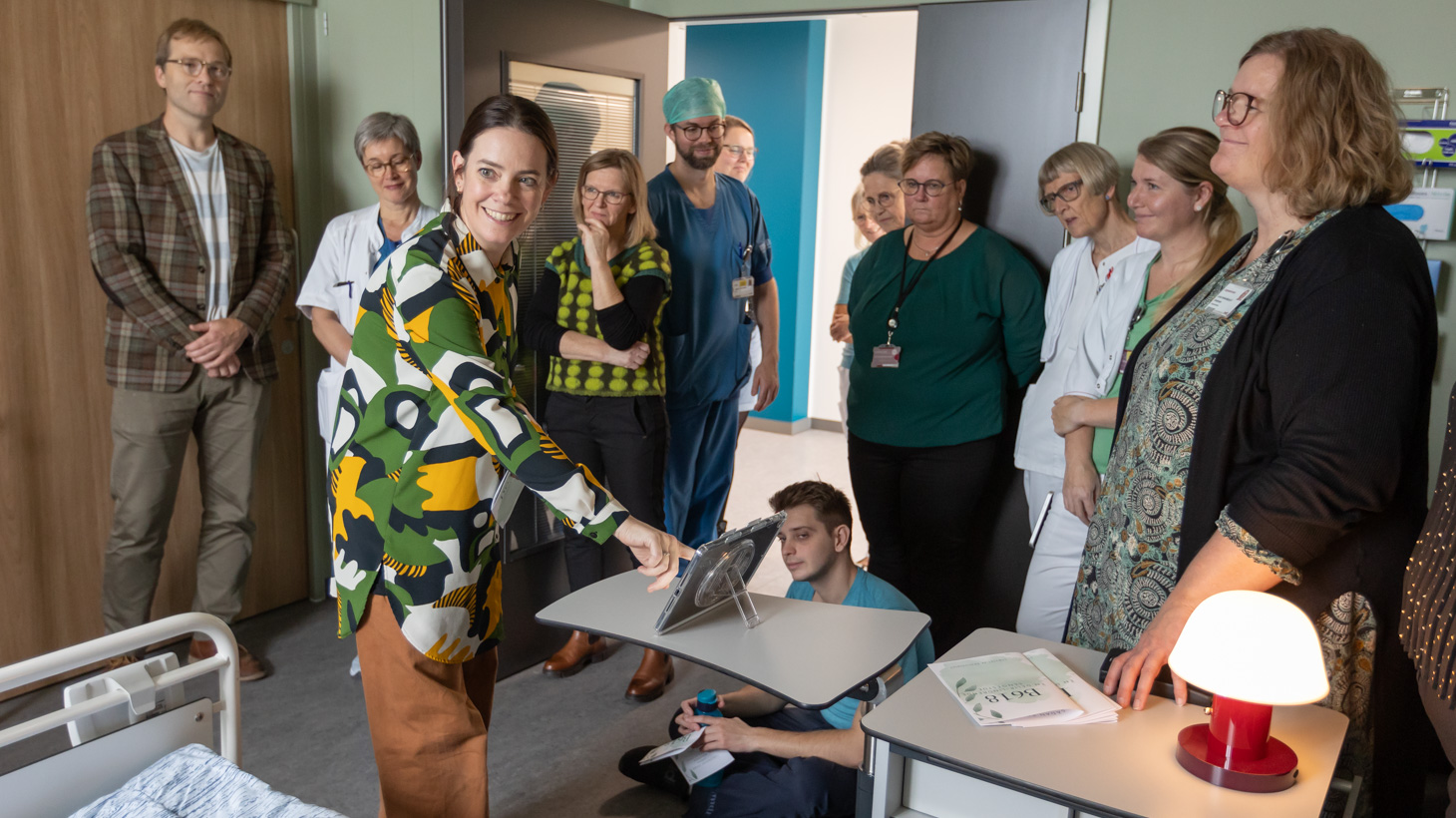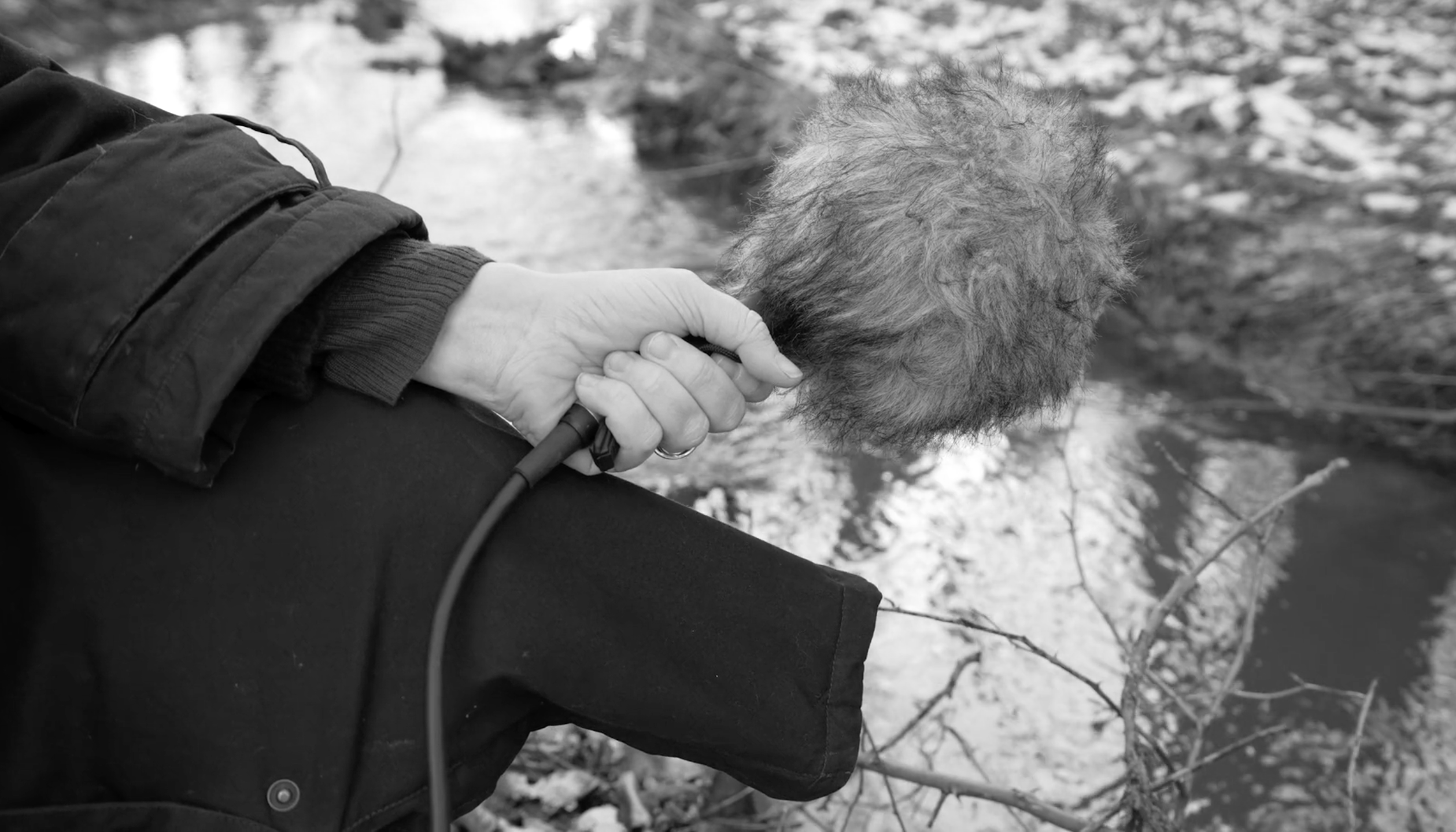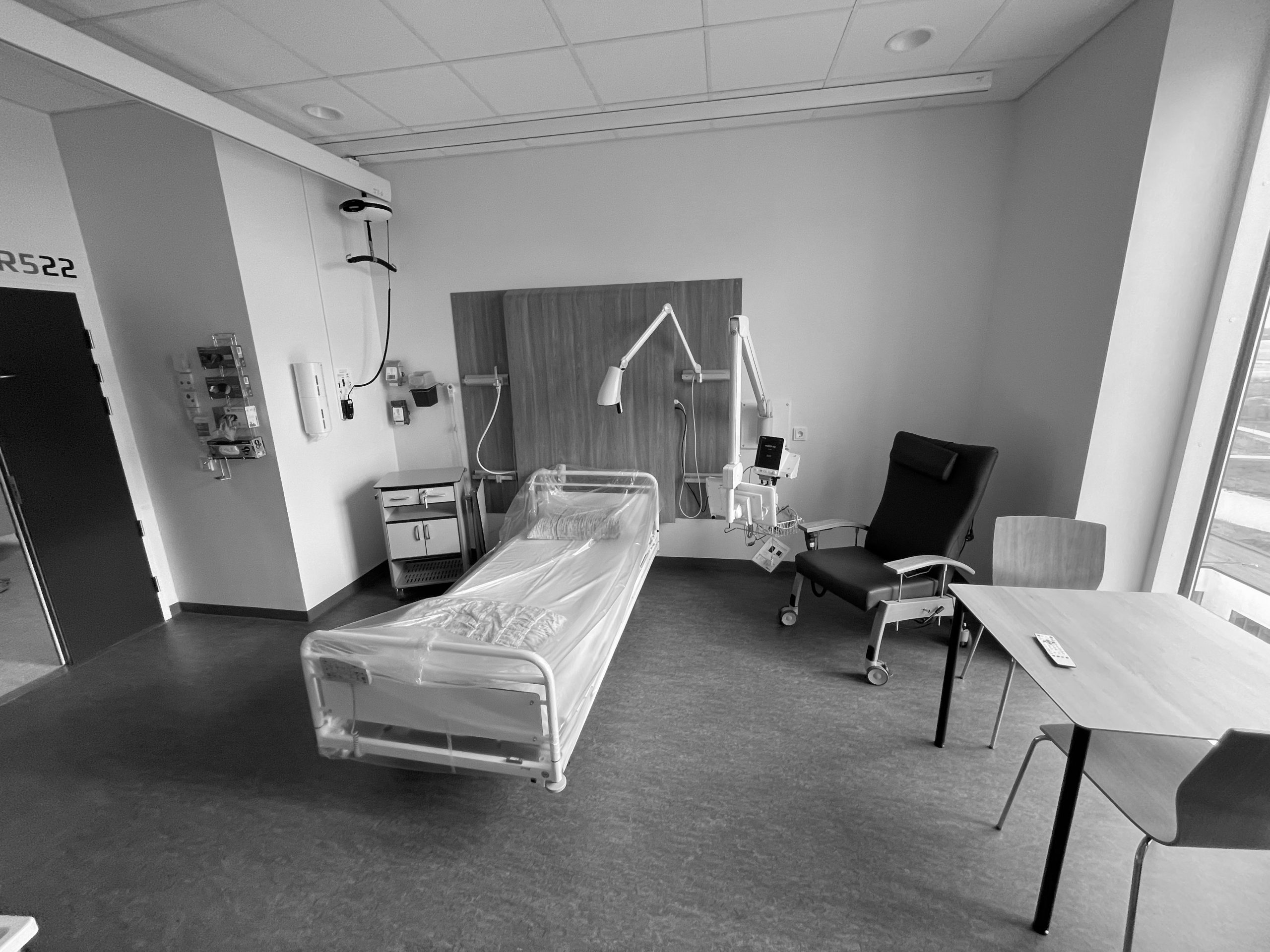
Delirium is a recurring and well-known phenomenon in hospitals, also observed in the urological surgery department. It is an acute disturbance in cognitive attention and awareness [9], which can leave long-term mental and physical health problems, and is distressing for all [10, 11, 12]. Instead of isolating the patient, this pilot project has experimented with the room as a non-pharmacological instrument to add specific strategic sensory stimuli for delirium patients, to calm the symptoms and to involve the family in the rehabilitation process.
At Regionshospital Gødstrup, a dedicated ’delirium-palliating patient room’ was established in the Department of Urology, as a part parts of the ”Art in Health Biennale, a pre-project,” in November 2023. The project explored the synthesis of augmented sound environments and distinctive interior design to create a homely atmosphere within the patient room. The focal point of the pilot was to contribute to fostering a sense of security, calmness and tranquillity for the patients while concurrently transforming the room into a modifiable instrument for the staff. This instrumentality enables the healthcare personnel to selectively manage sensory stimuli for delirium patients, guided by the concepts of Recognizability and Repeatability.
The early signs of effectiveness and value for patients, relatives, and staff in the urological surgical ward. The implementation has demonstrated potential, such as fostering pride, increasing job satisfaction and reducing stress. This can further enhance curiosity and innovation within the department in turn strengthening a high resilience. Furthermore, it has provided peace and reassurance for patients and their relatives experiencing delirium in the course of the illness.
Healthcare staff believe that being at home is the ideal place for someone in a delirious state. Anthropologist Ida W. Winther explains that the sense of feeling at home is linked to mood and atmosphere, directed at both physical space and the people present. Creating this sense involves supporting inclusion in the patients and their relatives space [19].
In the intersection of sound and interior, there is a focus on tactility, aural perception, and visual elements, examining how these can contribute to providing sensory stimuli in the hospital room. The work engages with themes of textures, movements, and tones, exploring the intersection between the domestic and the natural. The soundscapes thus include sounds associated with nature (forest, beach, wildlife) but also with the body’s natural rhythms (heartbeats, movement) and the rhythm of the day (time and flow). The design supports a sense of familiarity with materials, placement of objects, and colours.
Before the project, a close interdisciplinary collaboration between selected health and cultural actors led to the development of a mapping method for the hospital’s department, potentials, and barriers. Through observations and semi-structured interviews with doctors, nurses, psychologists, occupational therapists, department leaders, patients, and relatives, the Atmospheric Gap analysis was created, forming the foundation for realizing this pilot. The method builds on the principles of Art in Health outlined by the World Health Organization in the report: Health Evidence Network Synthesis Report 67 [16]. The realization was curated by studio poēsís in collaboration with Chief Physician Maiken Milly Howard and Head Nurse Merete Haubjerg Sørensen.
“One intuitively lowers the shoulders and takes a slightly deeper breath when staying in that room. The sense of time is not as strong, one slows down, and forgets to watch the clock because it’s pleasant to be there.”
Chief physician, Anne Mette Eriksen, Department of Urology RHG

“As the room also has an effect on us, and we feel a different calmness in there, one can hope that it might also rub off on the patients.”
Nurse, Gurli Jeppesen, Department of Urology RHG
“I think the first time I was in here, there was streaming water from the tablet. There’s nothing as lovely as streaming water. We live up in Skive, and if you walk down by the fjord, it’s so wonderful to walk and listen to the water coming in.”
Relative, Department of Urology RHG





“They have listened to us. I think that has been really good, and it is important because otherwise, we will never take ownership of it. We will never use it as it might have been intended if it doesn’t come from what we believe in.”
Head nurse, Merete Haubjerg Sørensen, Department of Urology


Studio Poesis

We use necessary cookies to make our site work. With your consent, we may also use non-necessary cookies to improve the user experience and analyze website traffic. By clicking “Accept”, you agree to our website’s use of cookies